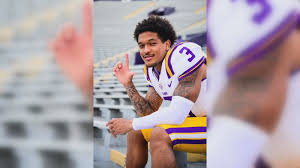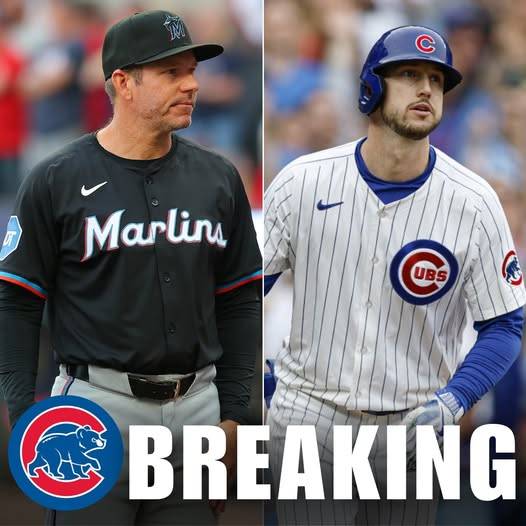
Former LSU football standout Greg Brooks has taken another significant step forward in his legal battle against Louisiana State University, as his lawsuit recently cleared a major procedural obstacle. The development marks a turning point in what has become one of the more closely watched legal confrontations involving a former student-athlete and a major NCAA institution. At the heart of the case is Brooks’ assertion that LSU failed to provide timely medical care and adequate oversight during a critical period in which his life-altering brain condition went undiagnosed. As the lawsuit proceeds toward trial, it is already raising questions about university liability, athlete health protocols, and the ethical boundaries of collegiate athletics programs.
Brooks, who transferred to LSU from Arkansas in 2022, played safety for the Tigers and quickly established himself as a reliable contributor on defense. His aggressive style and football instincts earned him high praise from coaches, teammates, and analysts. But his 2023 season came to a shocking and abrupt halt when he was diagnosed with a rare and serious medical condition—medulloblastoma, a type of brain tumor typically found in children. The discovery not only ended his football career but also set in motion a painful medical and legal journey.
According to the claims laid out in the lawsuit, Brooks alleges that LSU medical staff failed to respond appropriately to his early complaints of symptoms, which included headaches, dizziness, and vision problems. Instead of conducting thorough neurological evaluations or escalating his concerns to outside specialists, the university’s medical personnel allegedly dismissed or misinterpreted his symptoms as common sports-related issues. Brooks and his legal team argue that this delay in proper diagnosis led to a deterioration of his condition, resulting in long-term health consequences that could have been mitigated with earlier intervention.
In response, LSU has denied wrongdoing and filed multiple motions to dismiss the case, citing sovereign immunity and arguing that its medical personnel acted within the scope of their professional responsibilities. The university also contended that Brooks had signed waivers and consent forms that limited the school’s legal liability for injuries or illnesses arising from participation in college athletics. However, in a recent decision handed down by a state district court judge, LSU’s motion to dismiss was rejected, allowing the case to proceed. The judge determined that the issues at stake—particularly the question of whether LSU acted with gross negligence or deliberate indifference—warrant a full hearing.
This legal victory does not equate to a verdict in Brooks’ favor, but it represents a crucial step in the lengthy litigation process. Legal experts note that overcoming a motion to dismiss in cases involving public universities is often one of the most challenging hurdles for plaintiffs. Sovereign immunity laws in Louisiana and elsewhere typically protect state institutions from lawsuits unless the plaintiff can establish that egregious misconduct occurred. In this case, the court’s decision suggests that Brooks’ allegations, if proven true, could rise to that level of severity.
The broader implications of the case extend beyond the fate of one student-athlete. As awareness of long-term athlete health continues to grow, schools are being placed under increasing scrutiny for how they manage injuries and medical care. Collegiate programs often employ in-house medical staff who must walk a fine line between caring for athletes and serving the competitive interests of their teams. Critics argue that this dual loyalty creates an inherent conflict of interest—one that may have played a role in Brooks’ situation. The lawsuit has reignited conversations about whether athletic departments should maintain more independent oversight of medical decisions.
In addition to LSU’s internal operations, the lawsuit also raises concerns about NCAA standards. Brooks’ legal team has pointed to inconsistencies in how health protocols are applied across different schools and conferences, suggesting a need for more uniform enforcement and accountability. While the NCAA has issued guidelines in recent years concerning concussion protocols and mental health support, critics say that enforcement remains lax and reactive. Brooks’ case, they argue, is a painful reminder that guidelines without robust enforcement mechanisms are insufficient to safeguard student-athletes.
The human cost of the case is palpable. In interviews, Brooks’ family has spoken candidly about the emotional and financial toll of his diagnosis. They describe a young man who once dreamed of an NFL career now facing an uncertain medical future, with rehabilitation and ongoing treatment consuming much of his time and energy. Friends and former teammates have rallied around him, launching fundraising efforts and spreading awareness on social media. For many within the LSU community, Brooks has become a symbol of resilience—but also a cautionary tale about the fragile balance between athletic glory and personal well-being.
Public reaction to the lawsuit has been mixed. While many fans have expressed sympathy and support for Brooks, others have questioned the merits of suing the university. Online forums and social media comment sections are filled with passionate debate, with some arguing that injuries are an inherent risk of playing football and others insisting that universities owe a higher duty of care to their athletes. The case has touched a nerve in a culture where college football is revered, and institutional loyalty often runs deep.
Meanwhile, LSU continues to face questions about how it handled Brooks’ medical complaints. Internal documents and communications could become central pieces of evidence as the case moves toward discovery and potential trial. If depositions reveal that medical concerns were downplayed or ignored for the sake of keeping a key player on the field, it could lead to serious reputational and financial consequences for the university. Furthermore, if the court finds that LSU failed to follow established procedures for dealing with serious symptoms, other athletes might be inspired to come forward with their own grievances.
The timing of this lawsuit also coincides with broader shifts in the collegiate athletics landscape. The NCAA and its member institutions are under pressure from multiple fronts—ranging from Name, Image, and Likeness (NIL) reforms to potential unionization efforts among student-athletes. Cases like Brooks’ underscore how vulnerable athletes can be, even in an era when they are starting to gain more rights and visibility. Legal analysts speculate that a verdict in favor of Brooks—or even a significant settlement—could set a new precedent for how universities manage athlete health and their corresponding legal obligations.
As the legal process continues, both sides are preparing for what promises to be a complex and emotionally charged trial. Brooks’ attorneys are likely to call upon expert witnesses in neurology, sports medicine, and athletic administration to bolster their case, while LSU is expected to defend its practices as consistent with medical standards and NCAA regulations. In the court of public opinion, the battle is already well underway.
The university has declined to comment on ongoing litigation but has reiterated its commitment to athlete health and welfare. In a brief statement, an LSU spokesperson emphasized that the school takes all medical complaints seriously and provides comprehensive care through its athletic department. Nevertheless, the court’s refusal to dismiss the case suggests that more questions will be asked before any final resolution is reached.
For Greg Brooks, the road ahead is uncertain. His football career may be over, but his fight—for justice, accountability, and perhaps systemic change—continues. If his lawsuit succeeds, it could lead to reforms not just at LSU but across collegiate athletics. If it fails, it will still serve as a powerful reminder of the risks student-athletes take and the responsibilities universities bear. In either outcome, Brooks’ story is already reshaping how we think about health, duty, and fairness in college sports.
As the college football world watches this case unfold, the hope is that it will prompt serious introspection and change. For every athlete chasing glory on Saturday afternoons, there lies the potential for unseen struggle—and it is up to institutions, fans, and governing bodies to ensure those struggles are not met with silence or neglect. Greg Brooks may no longer take the field, but his legacy might ultimately extend far beyond any stadium.



